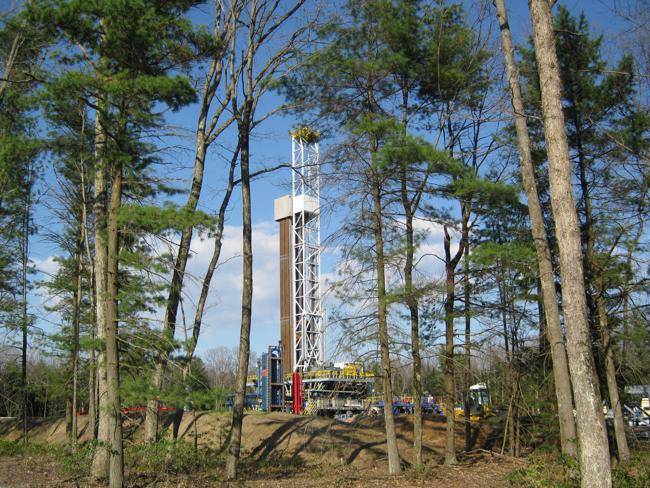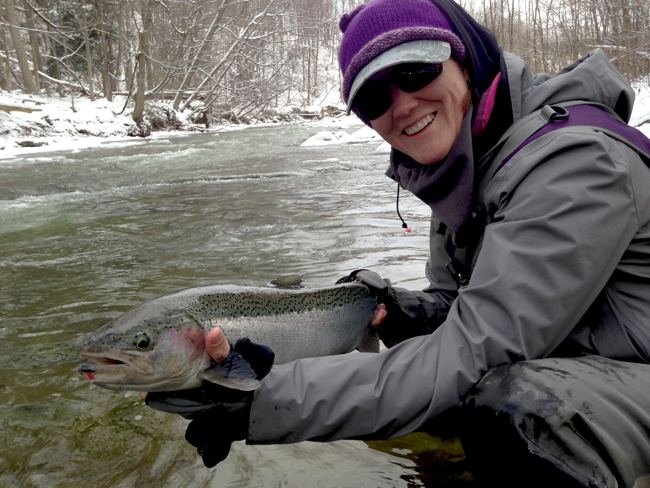This report from Trout Unlimited looks at places where expanding natural gas drilling operations in the East could pose risks to fishing and hunting opportunities, and offers recommendations on what sportsmen and women can do to promote responsible energy development and ensure the protection of these areas.
PROTECTING SPECIAL PLACES

The longstanding sporting tradition in the eastern United States has been a part of the region’s history and culture since colonial times and this heritage still holds true. Today, the central Appalachians’ remote mountains, forest and rivers that have provided abundant fish and wildlife habitat, and attracted generations of sportsmen, are at risk.
Large areas of Pennsylvania, New York and West Virginia, and parts of Maryland, Virginia and Ohio, have become the epicenter for energy development in the East. As companies flock to the region to drill for natural gas, this energy development could fundamentally alter hunting on some of the largest tracts of public lands in the East and fishing on thousands of miles of pristine native and wild trout streams, including tributaries of the Great Lakes.
For the 8.8 million hunters and anglers who fish and hunt in the Appalachians, this is a big deal. Trout Unlimited members and other sportsmen and women are working together to ensure these special places are protected for future generations.
Drilling in the Marcellus and Utica Shales

Lying 6,000 to 9,000 feet below the earth’s surface, the Marcellus shale formation encompasses approximately 95,000 square miles occupying parts of New York, Pennsylvania, West Virginia, Maryland, Virginia and Ohio.
Approximately 3,000 to 7,000 feet beneath the Marcellus layer, the Utica shale formation underlies the same states, as well as parts of Kentucky and Tennessee, covering approximately 170,000 square miles. Combined, the two shale formations are expected to produce nearly 16 billion cubic feet of gas per day by 2017, a significant proportion of the nation’s expected overall natural gas production.
A process known as hydraulic fracturing is used to access these deep shale deposits. Approximately five million gallons of water, along with sand and chemicals, are injected deep underground to open up fractures in the rock and release the gas. The water required for hydraulic fracturing activities can be taken from streams or groundwater sources near drilling sites. If taken during low-flow periods or during spawning season, these withdrawals can harm fish and other aquatic species. In addition, spills, leaks and illegal discharges of drilling fluids or wastewater can be lethal to sensitive fish and game.
Up to 20 percent of the water and chemicals injected into each well returns to the surface, bringing with it heavy metals, radioactive materials and saltwater from the rock formation. If not disposed of properly, the wastewater can contaminate nearby land and water resources.
An estimated 1,340 trucks travel to each well pad site, transporting fresh water, wastewater and drilling equipment. New roads constructed to accommodate the truck traffic can bisect important game habitat and can add sediment to trout streams.
Removal of oak, beech and other trees and vegetation can reduce important food sources for game and create openings for invasive plants to take over native habitat. For hunters and anglers, long-used access to public or private lands may be limited in some instances due to active drilling operations.
A Sporting Heritage at Stake

Sportsmen and women have a significant stake in how shale gas is developed throughout the region, as do the communities that rely upon the economic activity resulting from these sporting activities. Hunting and fishing in the Marcellus and Utica shale area is big business. According to the U.S. Fish and Wildlife Service, fishing, hunting and wildlife-related recreation generates more than $11.5 billion in revenue each year in Pennsylvania, New York and West Virginia — the three states with the largest shale gas deposits in the region.
In 2010, Trout Unlimited members joined other sportsmen and women across the region to identify and propose solutions to the impacts caused by shale gas drilling on valuable fish and game resources and hunting, fishing, trapping and other outdoor sporting activities. Today, that group, the Sportsmen Alliance for Marcellus Conservation, includes hunting, fishing, trapping and other conservation organizations that collectively represent more than 275,000 people.
Trout Unlimited promotes responsible energy development, most often by working collaboratively with government officials, industry, other conservation and sportsmen’s organizations, and the public to ensure that all reasonable efforts are made to avoid or mitigate the impacts energy development may have on coldwater fisheries and their watersheds. Current federal, state and local policies governing shale gas drilling and hydraulic fracturing often do not adequately protect the region’s natural resources. And even with adequate provisions in place, some areas are so extraordinary — either ecologically, culturally, or both — that gas drilling should be limited or prohibited altogether.
Dozens of places throughout the Marcellus and Utica region, ranging from small county parks to large national forests that hold special value for hunters and anglers, are at risk for short- and long-term changes that could fundamentally alter their character.
Trout Unlimited’s report describes 10 of these special places, illustrating their value to hunters and anglers, explaining why they are at risk, and describing how sportsmen and women can ensure that they are protected.
10 Special Places Final Report
Download a PDF of the 10 Special Places Final Report

